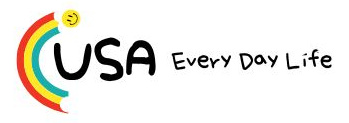Thirty-six buys, one hold and no sells: Medical device maker Boston Scientific is in pretty rarified air as far as Wall Street’s sell-side analysts are concerned. Why is that? Much of the investment world’s focus has rightly been directed at the AI build-out. It is, after all, a compelling growth story. However, there are other companies that have been growing rapidly, and for those seeking opportunities outside the AI sector, Boston Scientific (NYSE: BSX) may be worth considering. The company’s strong presence in cardiology, endoscopy, and neuromodulation has contributed to impressive top and bottom-line growth. The second quarter this year continued the steady five-year trend of sales growth, with net sales reaching $5.06 billion, representing a 22.8% year-over-year increase. Adjusted earnings per share (EPS) of 75 cents exceeded analyst expectations by 2.74%. This was largely due to a 29% surge in cardiovascular revenues from products like the WATCHMAN left atrial appendage closure device and the FARAPULSE pulsed field ablation system. Consequently, Boston Scientific raised its full-year 2025 guidance, now projecting 14%-15% organic sales growth and adjusted EPS of $2.95 to $2.99 (Street consensus is 2.98), and the average of analysts’ estimates for FY 2026 is 3.41/share, which would represent 14.3% YoY adjusted EPS growth. As of Friday’s $97.32 closing price, BSX is trading only a turn or so higher than the S & P while growing at double the pace. Strategic acquisitions are further enhancing this growth trajectory. The $88 million deal for Elutia’s BioEnvelope business, effective on Oct. 1, is expected to enhance protection for implantable devices. Earlier integrations of SoniVie’s TIVUS Intravascular Ultrasound System and Bolt Medical’s coronary lithotripsy technology have expanded capabilities in renal denervation and vascular intervention. With the pending acquisition of Cortex, expected in the first half of 2025, BSX is also set to advance neurovascular treatments. The company reports earnings on Oct. 22 (Street estimates are for approximately 71 cents per share); however, this is not a stock that historically moves significantly on earnings. The one-day average earnings-related move is less than 3%, although options premia are slightly elevated. Arguably, the biggest knock on the stock is technical. While the market is trading at all-time highs, BSX has fallen almost 10% since early September. Most technical indicators remain bullish, but not all. Consequently, a modestly bullish strategy may represent a slightly more conservative bullish play than buying the stock (or upside calls) outright. As a stock substitute, one might consider the following calendar call spread risk reversal. Selling a nearer-dated strangle against a longer-dated call purchase with a modest initial outlay. DISCLOSURES: All opinions expressed by the CNBC Pro contributors are solely their opinions and do not reflect the opinions of CNBC, NBC UNIVERSAL, their parent company or affiliates, and may have been previously disseminated by them on television, radio, internet or another medium. THE ABOVE CONTENT IS SUBJECT TO OUR TERMS AND CONDITIONS AND PRIVACY POLICY . THIS CONTENT IS PROVIDED FOR INFORMATIONAL PURPOSES ONLY AND DOES NOT CONSITUTE FINANCIAL, INVESTMENT, TAX OR LEGAL ADVICE OR A RECOMMENDATION TO BUY ANY SECURITY OR OTHER FINANCIAL ASSET. THE CONTENT IS GENERAL IN NATURE AND DOES NOT REFLECT ANY INDIVIDUAL’S UNIQUE PERSONAL CIRCUMSTANCES. THE ABOVE CONTENT MIGHT NOT BE SUITABLE FOR YOUR PARTICULAR CIRCUMSTANCES. BEFORE MAKING ANY FINANCIAL DECISIONS, YOU SHOULD STRONGLY CONSIDER SEEKING ADVICE FROM YOUR OWN FINANCIAL OR INVESTMENT ADVISOR. Click here for the full disclaimer.




